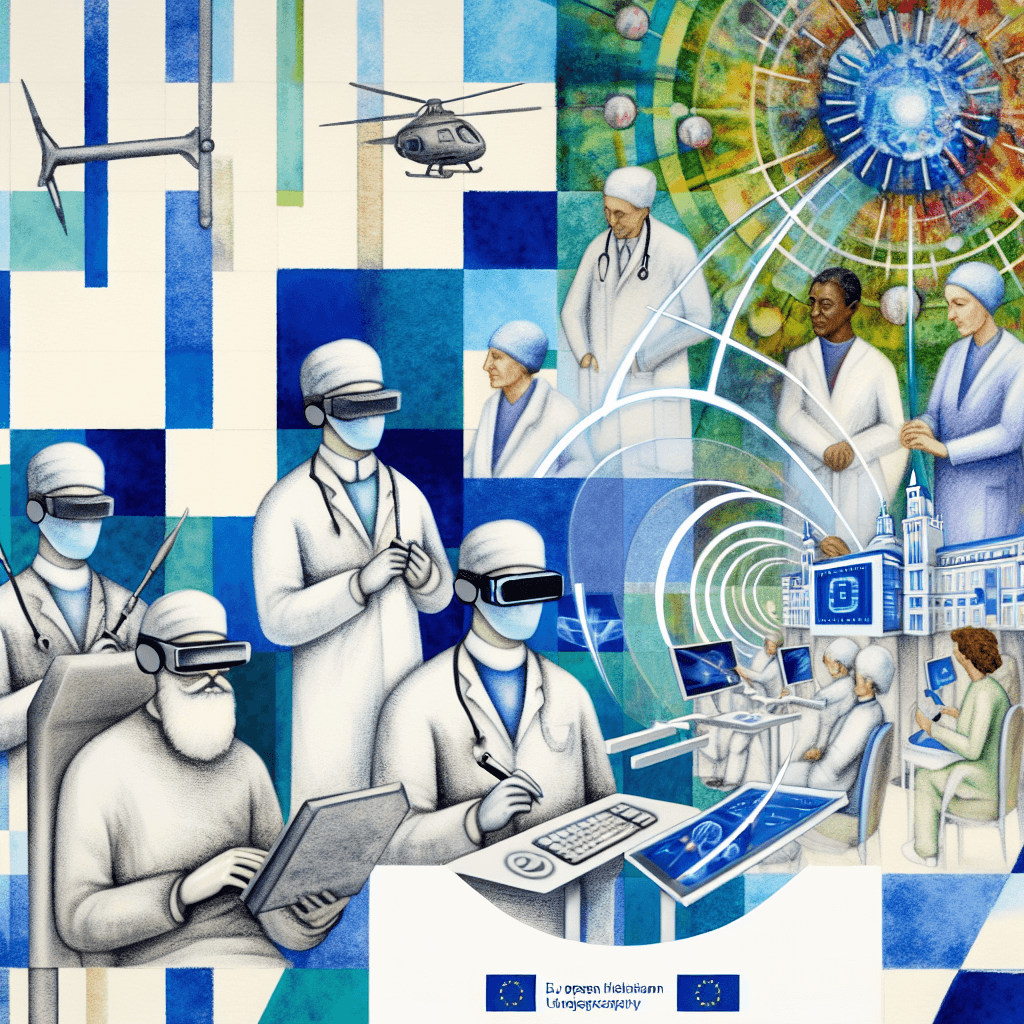Explore the growth of Europe’s AR and VR healthcare market, highlighting innovations and key players driving the industry forward.
Europe Augmented Reality and Virtual Reality in Healthcare Market

Table of Contents
- Europe Augmented Reality and Virtual Reality in Healthcare Market
- Overview of AR and VR in Healthcare
- Current Market Trends
- Case Studies Highlighting Impact
- Virtual Reality in Pain Management
- Augmented Reality in Surgery
- Technological Innovations Driving the Market
- Challenges and Barriers
- Future Outlook
- Conclusion
Europe Augmented Reality and Virtual Reality in Healthcare Market

The European healthcare sector is undergoing a significant transformation, driven by the integration of advanced technologies such as Augmented Reality (AR) and Virtual Reality (VR). These technologies are not just enhancing the way medical professionals train and perform procedures, but also how patients receive care and manage their health. This article explores the burgeoning role of AR and VR in Europe’s healthcare landscape, examining current trends, case studies, and the potential future developments.
Overview of AR and VR in Healthcare
Augmented Reality (AR) and Virtual Reality (VR) are technologies that superimpose and create digital information on the user’s view of the real world and virtual environments, respectively. In healthcare, these technologies serve multiple purposes from training medical staff using virtual simulations to assisting in complex surgeries through real-time data overlay.
Current Market Trends
The European AR and VR healthcare market has shown robust growth, driven by technological advancements, increasing healthcare expenditure, and the rising demand for innovative treatment methods. According to a recent market analysis, the European AR and VR in healthcare market is expected to grow significantly, with a compound annual growth rate (CAGR) of approximately 29.1% from 2020 to 2025.
- Adoption in Surgery: Surgeons use AR to overlay critical information such as CT scans and real-time data during operations, enhancing precision.
- Training and Education: Medical institutions are adopting VR simulations to train students in a risk-free environment.
- Therapeutic Uses: VR is increasingly used for pain management and in treating psychological conditions such as PTSD.
- Rehabilitation: AR and VR are used in physical therapy to motivate patients and track their progress.
Case Studies Highlighting Impact
Virtual Reality in Pain Management
In a notable example from Germany, VR applications are being used to help burn victims manage pain during dressing changes. A study conducted at the University Hospital in Munich revealed that patients using VR reported up to 50% less pain compared to those who did not use VR, showcasing the potential of immersive technology in clinical pain management.
Augmented Reality in Surgery
In France, a team of surgeons at Paris’s Georges Pompidou European Hospital successfully performed a complex cardiac surgery with the assistance of AR. The technology provided real-time 3D visualizations of the patient’s heart, which helped in precise navigation and execution of the procedure.
Technological Innovations Driving the Market
Several technological innovations are propelling the adoption of AR and VR in healthcare across Europe:
- Improved Hardware: Advancements in VR headsets and AR glasses, with better resolution and tracking capabilities, provide more realistic experiences.
- Software Development: Tailored software solutions for specific medical applications are enhancing both patient outcomes and training programs.
- Integration with AI: Combining AI with AR and VR allows for more personalized and adaptive learning experiences in training simulations and patient treatment plans.
Challenges and Barriers
Despite the promising growth, there are several challenges that the AR and VR healthcare market faces in Europe:
- High Costs: The high cost of VR and AR equipment can be a barrier for smaller healthcare providers.
- Regulatory Hurdles: Stringent EU regulations on medical devices can slow down the introduction of new AR and VR technologies.
- Data Privacy Concerns: The use of AR and VR involves handling sensitive patient data, raising concerns about privacy and data protection.
Future Outlook
The future of AR and VR in the European healthcare market looks promising with ongoing research and development. Innovations such as the integration of AR with robotics and the expansion of VR beyond therapy into preventive care are expected to drive further growth. Additionally, as the technology becomes more mainstream and costs decrease, smaller healthcare providers may also begin adopting AR and VR solutions.
Conclusion
The integration of Augmented Reality and Virtual Reality technologies in the European healthcare sector is transforming patient care, medical training, and therapeutic practices. With significant investments in technology and a strong focus on innovation, Europe is poised to lead in the adoption of AR and VR in healthcare. Despite facing challenges such as high costs and regulatory complexities, the benefits these technologies bring to the table—improved surgical outcomes, enhanced training methods, and effective pain management—underscore their potential to redefine healthcare standards not just in Europe, but globally.
In conclusion, as the AR and VR technologies continue to evolve, their integration into healthcare will likely become more profound, making advanced healthcare more accessible and efficient. The ongoing developments and future prospects indicate a vibrant growth trajectory for the AR and VR healthcare market in Europe.








